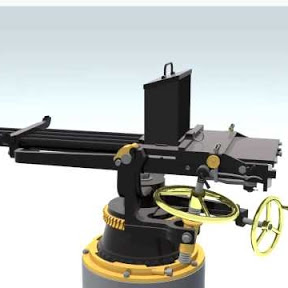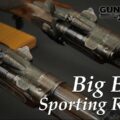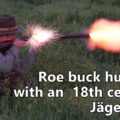The French 75 is widely regarded as the first modern artillery piece. It was the first field gun to include a hydro-pneumatic recoil mechanism, which kept the gun’s trail and wheels perfectly still during the firing sequence. Since it did not need to be re-aimed after each shot, the crew could reload and fire as soon as the barrel returned to its resting position. In typical use the French 75 could deliver fifteen rounds per minute on its target, either shrapnel or high-explosive, up to about 8,500 m (5.3 mi) away. Its firing rate could even reach close to 30 rounds per minute, albeit only for a very short time and with a highly experienced crew. [wikipedia: https://en.wikipedia.org/wiki/Canon_de_75_mod%C3%A8le_1897]The concept for the gun anticipated future conflict being a war of manoeuver – with massed infantry and cavalry attacks – based on the experience of the wars of 1870-1872. Consequently the gun was designed to be able to be moved easily, set up quickly and fire antipersonnel shells (shrapnel) rapidly, and without the need to reset the carriage after each shot. Two critical components were the cased ammunition (shell and cartridge as a single unit) and a recoil system that completely absorbed the recoil forces and returned the gun to its original position without disturbing the gun’s position.
This animation shows the actions necessary to prepare the gun from its ‘travelling’ state to operational state. The carriage has to be ‘locked’ into a fixed position and levelled. The operation of shrapnel shells depends upon setting a time fuse to explode the shell just in front of an attacking force, to shower them with balls, and demonstrates the French Débouchoir mechanical fuse setter that allowed time fuses to be set rapidly and accurately. The liquid(oil) and air (pneumatic) recoil mechanism used a ‘floating piston’ – on one side hydraulic oil and on the other compressed air. The design must keep these two separated while allowing the free piston to move rapidly. The French design laid great emphasis on seals made of silver – being soft enough to conform to the sleeve housing, but as reported by the US when they started manufacturing the 75mm, the key element was highly precise machining of the sleeve housing the free piston.
The French 75mm of 1897 was of less use with the introduction of trench warfare, where Howitzers and mortars being the primary artillery, but the 75mm retained some value, one use being firing shrapnel shells at aircraft. A longer time fuse had to be developed to reach the altitude that some aircraft flew at.
Music: Light Expanse by Unicorn Heads
Model and animation created with Cinema 4D
Primary Source: Atlas of Lithographs of the Canon de 75 Mle 1897
http://gallica.bnf.fr/ark:/12148/bpt6k6555554m
Other sources:
Ralph Lovett, Lovett Artillery Collection, https://www.lovettartillery.com/
Passion and Compassion: WW1 Fuzes Galleries. www.passioncompassion1418.com.
With Thanks to:
Erik Grumman
Philip Magrath, Royal Armouries, Fort Nelson
Ralph Lovett, Lovett Artillery Collection

Hi, I’m Rob, otherwise known as VBBSMYT.
I create the animations on my iMac using Cinema 4D, which I find very intuitive, and allows me to add smoke and flames, and then send the model to my trusty Render farm.
I make my models as accurate as possible through reference books and particularly good drawings. You may have seen my animations of early torpedoes and machine guns on YouTube. I enjoy finding out how things work and it has been fascinating to track the development from the late Victorian period up to World War 1.





